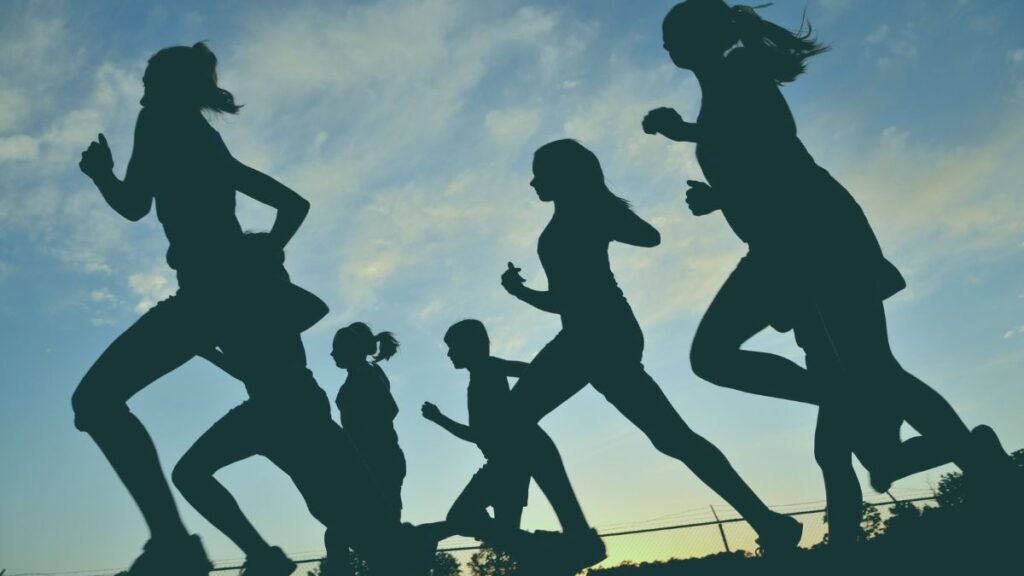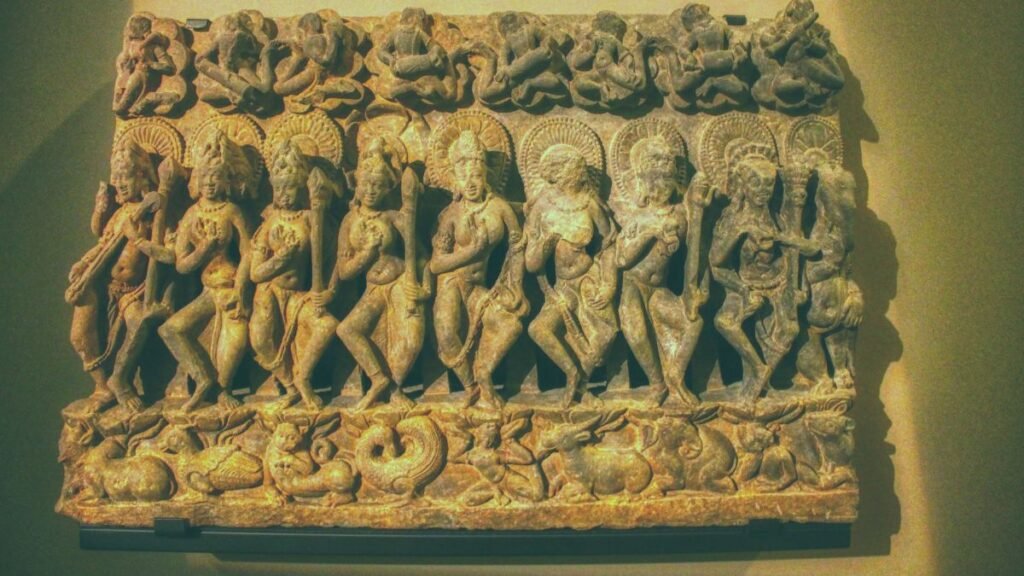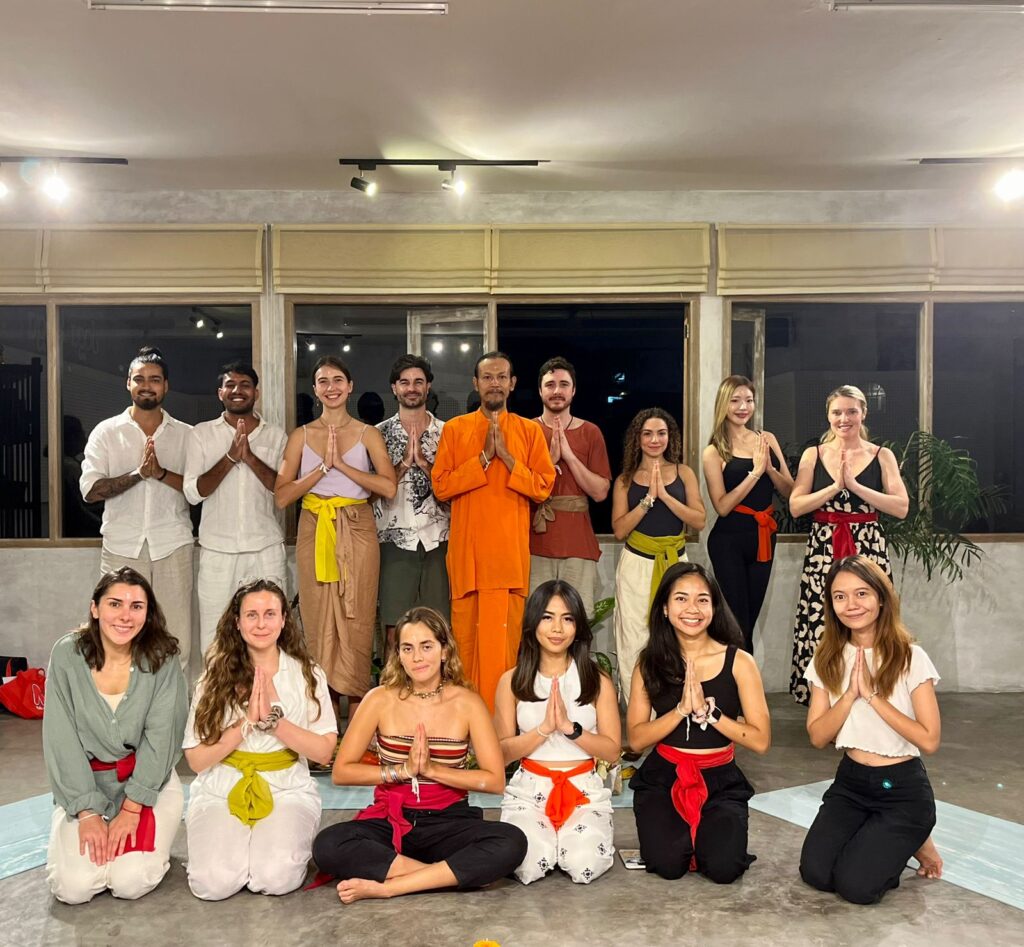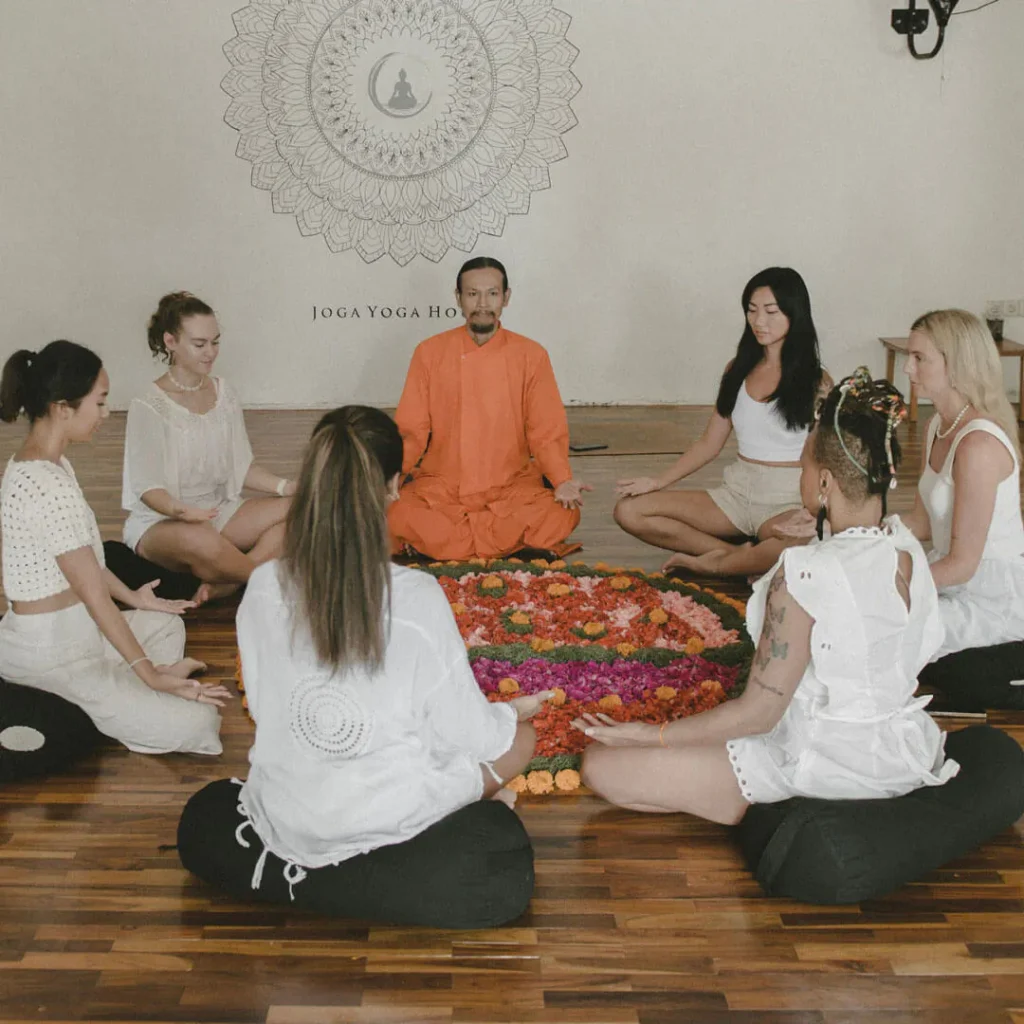Embarking on a yoga teacher training journey in Bali can be life-changing, but proper preparation is key to getting the most out of your experience. From choosing the right training program to understanding the unique Balinese culture, there are several essential steps to take before you arrive. This guide covers everything you need to know, from packing lists and pre-training routines to enhancing your personal practice and exploring the spiritual beauty of Bali.
Planning and Preparation

Embarking on a yoga teacher training in Bali is an exciting journey that requires careful planning and preparation. It’s crucial to consider the various aspects of the program, your personal needs, and the logistics of living in Bali. This section will guide you through essential steps to ensure a smooth and enriching experience.
1. Choosing the Right Yoga Teacher Training Program in Bali
Bali offers a wide variety of yoga teacher training programs, each catering to different yoga styles, experience levels, and durations. Choosing the right program is essential for aligning your goals with the training offered. Here’s a breakdown of popular types of training programs available in Bali:
- Hatha Yoga Teacher Training: Focusing on traditional yoga principles such as asanas, pranayama, and meditation, this is a perfect choice for beginners.
- Vinyasa Yoga Teacher Training: This dynamic and flowing style connects movement and breath. Vinyasa programs often include alignment, mindfulness, and breathwork.
- Ashtanga Yoga Teacher Training: A more structured and rigorous program focused on breath synchronization and physical discipline, ideal for those seeking a transformative practice.
- Restorative Yoga Teacher Training: This gentle, therapeutic style promotes relaxation and stress reduction.
- Yin Yoga Teacher Training: A meditative practice where poses are held for longer durations, targeting deep tissues and promoting flexibility.
For more detailed guidance, check out our comprehensive guide to yoga teacher training.
2. Packing Essentials for Yoga Teacher Training in Bali
Packing correctly can make a world of difference for your training experience. Here’s a checklist of what to bring:
- Yoga Mat and Accessories: A high-quality yoga mat, blocks, straps, and a meditation cushion are must-haves.
- Comfortable Clothing: Breathable, flexible clothing suitable for Bali’s tropical climate, such as leggings, shorts, and tank tops.
- Personal Hygiene: Sunscreen, insect repellent, toiletries, and a reusable water bottle.
- First Aid Kit: Basic medications, including over-the-counter pain relievers and any prescription medications.
- Travel Documents: Passport, visa (if required), travel insurance, and sufficient local currency or cards for expenses.
- Tech Gear: A tablet or laptop for notes, and don’t forget adapters for Bali’s electrical outlets.
For more travel tips, explore our article on yoga class essentials in Canggu.
3. Pre-Training Yoga Practice
Prepare your body and mind by establishing a consistent yoga practice routine before your training begins. A regular yoga practice will help build strength, flexibility, and stamina, while also preparing you for the mental discipline required.
Here’s a simple routine to help you prepare:
- Warm-up: Start with gentle stretches such as Cat-Cow or Sun Salutations.
- Standing Poses: Incorporate poses like Warrior I and Triangle to build strength.
- Backbends: Poses like Cobra and Upward-Facing Dog to improve spinal flexibility.
- Twists and Restoratives: Add seated twists and Child’s Pose for relaxation and detoxification.
For more guidance on developing your practice, check out our guide on yoga for better sleep.
4. Financial Planning
Costs can vary widely for yoga teacher training programs in Bali, so it’s important to budget wisely. Here’s a breakdown of what to consider:
- Program Fees: This includes tuition, accommodation, and sometimes meals.
- Living Expenses: Food, transportation, and personal expenses.
- Travel Costs: Flights to Bali, airport transfers, and any internal travel.
- Visa Fees: Ensure you’re aware of visa requirements and related costs.
Make sure to check your chosen school’s refund and payment policies, and explore whether they offer early bird discounts. If you’re still deciding on the program length, see our article on choosing between a 200-hour and 300-hour yoga teacher training.
5. Embracing the Balinese Culture and Lifestyle
Yoga in Bali goes beyond the mat. The island’s spiritual ambiance, friendly locals, and ancient temples create a unique environment for self-discovery and growth. When you’re not training, take the opportunity to immerse yourself in Bali’s rich culture:
- Visit Temples: Sacred sites like Tanah Lot and Uluwatu offer a peaceful backdrop for meditation and reflection.
- Respect Local Traditions: Dress modestly when visiting temples and remove your shoes before entering homes or sacred spaces.
- Learn Balinese Phrases: Simple greetings like “Om Swastiastu” (hello) can help you connect with locals.
For a deeper dive into Bali’s spiritual significance and how it intertwines with yoga, explore why Bali is the ultimate yoga destination.
6. Navigating the Training Environment
Bali’s tropical climate can be intense, but with a few adjustments, you can stay comfortable throughout your training:
- Stay Hydrated: Drink plenty of water and opt for coconut water for extra hydration.
- Dress for the Heat: Wear light, breathable fabrics and avoid dark colors that absorb heat.
- Protect Your Skin: Use a high SPF sunscreen and wear a hat and sunglasses during breaks.
In addition to climate adaptation, maintaining a balanced diet is key for energy during training. Learn more in our guide to yoga diet and nutrition.

By following these steps, you’ll be well-prepared for your yoga teacher training in Bali, both physically and mentally. Whether you’re deepening your practice or embracing Bali’s spiritual environment, this journey will undoubtedly leave a lasting impact. If you’re still curious about what to expect, visit our detailed guide on yoga teacher training in Bali.
Key Factors to Consider When Doing Yoga Teacher Training in Bali
Several crucial factors should guide your decision when choosing a yoga teacher training program in Bali.
- Duration: Yoga teacher training programs vary in duration, ranging from a few weeks to several months. When selecting a program, consider your time commitment and financial resources.
- Cost: Yoga teacher training programs in Bali can vary significantly, depending on factors such as the school’s reputation, accommodation options, and program duration. Research different programs and compare their pricing structures.
- Accreditation: Accreditation ensures that a yoga teacher training program meets certain standards of quality and rigor. Look for programs accredited by reputable organizations like Yoga Alliance (YA). Accreditation can benefit future career opportunities and recognition within the yoga community.
- Teacher Experience and Qualifications: The experience and qualifications of the lead teachers are crucial to the quality of your training. Research the teachers’ backgrounds, teaching styles, and experience in the yoga field.
- Program Curriculum: The curriculum should cover essential topics such as anatomy, physiology, yoga philosophy, teaching methodology, and ethics. Evaluate the program’s content and ensure it aligns with your learning goals.
- Location and Environment: The location and environment of the yoga school can significantly influence your training experience. Consider factors such as the school’s proximity to nature, the quality of accommodation, and the overall ambiance.
- Student Reviews and Testimonials: Reading reviews and testimonials from previous students can provide valuable insights into the program’s strengths, weaknesses, and overall experience. Online platforms like Yoga Teacher Training Reviews or Tripadvisor can offer valuable information.
Lifestyle and Culture in Bali

Bali, often called the “Land of the Gods,” is a vibrant island with a rich spiritual heritage that deeply influences the yoga experience. Known for its serene landscapes, ancient temples, and spiritual atmosphere, Bali offers the perfect environment to immerse yourself in yoga teacher training. Yoga in Bali is not just about physical practice—it’s woven into the island’s culture, traditions, and beliefs, creating a unique setting for self-discovery and personal growth.
The Spiritual Significance of Yoga in Bali
Yoga in Bali extends beyond the physical aspect and is viewed as a holistic practice that connects the body, mind, and spirit. The Balinese people believe in achieving harmony and balance through their spiritual practices, which is why yoga fits naturally into the island’s cultural fabric.
During your yoga teacher training, you will likely encounter yoga retreats held at sacred sites and temples, further enriching your spiritual journey. To understand more about how these principles influence your practice, explore our article on Yoga Philosophy and Its Principles.
Daily Routine and Lifestyle During Yoga Teacher Training
Yoga teacher training in Bali follow a structured daily routine that balances intensive yoga practice with opportunities for cultural immersion. A typical day might look like this:
- Early Morning Meditation and Asana Practice: Start your day with sunrise meditation and dynamic asana flows.
- Breakfast: Refuel with a nourishing meal before the day’s lessons.
- Yoga Philosophy and Anatomy Lectures: Delve into the fundamentals of yoga, including anatomy and philosophy.
- Afternoon Break: Explore the local surroundings or relax during the midday break.
- Asana Alignment and Adjustments: Refine your asana practice with alignment and adjustments under expert guidance.
- Evening Meditation and Pranayama: Wind down with meditation or breathing exercises to end the day.
If you’re wondering how long this journey takes, check out our detailed post on how long it takes to become a yoga teacher.
Respecting Balinese Customs and Traditions
As a deeply spiritual island, Bali places great importance on customs and traditions, especially in religious and sacred spaces. Showing respect for these traditions is crucial during your stay. Here are some important tips:
- Dress Modestly: When visiting temples or sacred sites, wear modest clothing, covering your shoulders and knees.
- Shoes Off: Always remove your shoes before entering homes or temples.
- Make Offerings: It’s customary to make a small donation when visiting temples, typically a few thousand rupiah.
- Mind Your Behavior: Bali is known for its peaceful environment, so avoid loud or disruptive behavior, especially in sacred spaces.
To deepen your cultural understanding, read our guide on the spiritual essence of Bali as the ultimate yoga destination.
Navigating the Local Culture and Community
Balinese people are renowned for their warmth and hospitality. Engaging with the local community can enhance your experience, giving you a deeper connection to Bali’s way of life. Here’s how you can respectfully immerse yourself in the culture:
- Learn Basic Phrases: Simple greetings like “Om Swastiastu” (hello) can go a long way in fostering connections.
- Try Local Cuisine: Balinese food is both diverse and delicious, with dishes like Nasi Campur and Babi Guling offering unique flavors. Start slow, though—let your body adjust to new foods.
- Shop Locally: Visit traditional markets to experience the vibrant culture and support local artisans.
For more information on how yoga practice and Balinese culture intertwine, check out our article on balancing yoga and nutrition.
Preparing for the Yoga Training Environment: Climate and Health
The tropical climate in Bali can be both a blessing and a challenge. The heat and humidity may take some getting used to, but with proper preparation, you’ll thrive during your training.
- Hydration: Keep hydrated by drinking plenty of water throughout the day. Coconut water is an excellent option for staying refreshed.
- Sun Protection: Apply high-SPF sunscreen and wear hats and sunglasses to protect yourself from the sun.
- Breathable Clothing: Lightweight fabrics like cotton and linen will keep you comfortable in the heat.
Navigating the local food scene also comes with its own considerations. Here are some tips to stay safe and healthy:
- Food Safety: Stick to reputable restaurants to avoid foodborne illnesses, and drink only bottled or filtered water.
- Dietary Adjustments: Ease into the local cuisine gradually. If you have dietary restrictions, communicate them clearly to restaurant staff.
For more health tips, you can explore our post on the effects of yoga on the skeletal system to understand how yoga benefits your body during training.
Health and Wellness Precautions
Taking care of your health is essential during your yoga teacher training. Here are a few important precautions:
- Travel Insurance: Make sure you have comprehensive travel insurance that covers medical expenses and emergencies.
- Immunizations: Consult your doctor for any recommended immunizations for Bali.
- Mosquito Repellent: Protect yourself from mosquito bites by using insect repellent, especially at dawn and dusk.
- Emergency Medical Care: Familiarize yourself with nearby clinics or hospitals in case of any health issues.
For more on balancing health and well-being through yoga, check out our guide on how yoga can improve your overall health as you age.
Developing Your Yoga Practice in Bali

Preparing for yoga teacher training in Bali goes beyond mastering physical poses. It’s essential to dive into the philosophy, anatomy, and deeper aspects of yoga, which will empower you to teach effectively and share yoga’s transformative benefits with others. Building a strong foundation in these areas ensures you’re fully prepared for the challenges and opportunities that teacher training brings.
Building a Consistent Practice Routine
Consistency in your yoga practice is key to building strength, flexibility, and a deeper understanding of yoga. Aiming for a daily practice—even for just 20-30 minutes—helps prepare your body and mind for the intensity of teacher training. Your routine should include a variety of poses, breathing exercises, and meditation.
Creating a Balanced Routine
Here’s a suggested routine to help you create a well-rounded yoga practice:
- Warm-up: Start with gentle movements like Sun Salutations or Cat-Cow Pose to warm up your muscles.
- Standing Poses: Focus on poses like Warrior I, Warrior II, and Triangle to build strength and balance.
- Backbends: Incorporate Cobra or Upward-Facing Dog to open the chest and strengthen your spine.
- Forward Bends: Practice Standing Forward Bend and Seated Forward Bend to enhance flexibility and calm your mind.
- Twists: Include poses like Revolved Triangle and Seated Twist to improve digestion and detoxify the body.
- Inversions: Poses like Downward-Facing Dog or Headstand increase blood flow to the brain and promote relaxation.
- Restorative Poses: End your practice with Child’s Pose or Supported Bridge to release tension and encourage deep relaxation.
- Breathing Techniques (Pranayama): Add breathing exercises like Ujjayi breath or alternate nostril breathing to calm the nervous system.
- Meditation: Incorporate a few minutes of mindfulness meditation daily to improve focus and cultivate inner peace.
Understanding the Anatomy of Yoga Poses
Knowing the anatomy behind yoga poses helps you align the body safely and prevent injuries. This is crucial not only for your personal practice but also for effectively guiding others.
- Muscle Action: Understand how different muscles engage and stretch during each pose. For example, in Warrior II, your quadriceps and gluteus maximus engage while your hamstrings stretch.
- Alignment: Correct alignment ensures safety. In Downward-Facing Dog, your wrists should be directly under your shoulders, with hips higher than your shoulders for optimal balance.
For a more in-depth guide, check out our article on yoga anatomy, which covers everything from muscle engagement to alignment.
Developing Your Yoga Teaching Skills
To become a confident yoga teacher, practice and observation are key. Here’s how to enhance your teaching abilities:
- Observe Experienced Teachers: Attend classes to observe teaching styles, cueing, and adjustments.
- Practice Cueing: Develop clear and concise instructions to help students understand each pose’s alignment and movement.
- Learn to Adjust Students: Hands-on adjustments can help students deepen their poses and improve their form.
- Practice Sequencing: Create sequences that flow smoothly and meet specific needs, like flexibility, strength, or relaxation. For more ideas on sequencing, visit our guide on asana sequencing for beginners.
Keeping a Yoga Journal
Maintaining a yoga journal is an invaluable tool for tracking your progress, reflecting on your journey, and deepening your understanding of the practice.
- Tracking Progress: Document your practice and note any challenges or breakthroughs.
- Reflecting on Experiences: Use your journal to explore how yoga impacts your physical, mental, and emotional well-being.
- Developing Self-Awareness: Journaling helps identify growth areas and patterns in your practice.
- Inspiring Creativity: Use your journal for new ideas on teaching sequences or modifications.
Exploring Bali Beyond the Training

Bali offers a captivating blend of natural beauty, cultural heritage, and spiritual serenity, providing a rich tapestry of experiences beyond your yoga teacher training. Embrace the opportunity to explore the island’s diverse landscapes, immerse yourself in local traditions, and savor the authentic flavors of Balinese cuisine.
Exploring Bali’s Natural Beauty and Cultural Attractions
Bali’s natural landscapes are a testament to its diverse and captivating beauty. From lush rice paddies and cascading waterfalls to pristine beaches and volcanic peaks, the island offers a plethora of scenic wonders.
- Ubud: The cultural heart of Bali, Ubud is renowned for its traditional arts, ancient temples, and serene rice paddies. Explore the Tegalalang Rice Terrace, witness the Kecak Fire Dance, and immerse yourself in the artistic atmosphere of the Ubud Monkey Forest.
- Nusa Dua: A luxurious beach resort destination, Nusa Dua offers pristine beaches, world-class hotels, and a vibrant nightlife. Enjoy water sports like snorkeling, diving, and windsurfing, or simply relax on the white sand beaches.
- Canggu: Known for its laid-back vibe, Canggu is a haven for surfers, yogis, and digital nomads. With its black sand beaches, trendy cafes, and yoga retreats, Canggu is the perfect spot to combine relaxation with self-improvement. You can even deepen your practice by visiting local yoga studios or joining a yoga class in Canggu, all while soaking up the unique beach-town atmosphere.
- Kelingking Beach: Located on the island of Nusa Penida, Kelingking Beach is a breathtaking spectacle of dramatic cliffs and turquoise waters. Hike to the viewpoint for panoramic views or take a boat trip to explore the surrounding coastline.
- Mount Batur: An active volcano, Mount Batur offers stunning sunrise hikes and breathtaking views of the surrounding caldera. Trek to the summit to witness the fiery glow of the volcano and enjoy a traditional Balinese breakfast.
- Tanah Lot Temple: A sacred sea temple perched on a dramatic rock formation, Tanah Lot is a symbol of Balinese spirituality. Witness the temple bathed in the golden light of sunset and enjoy the vibrant cultural performances.
Local Experiences and Activities
Bali offers many local experiences and activities that will enrich your understanding of the island’s culture and traditions.
- Traditional Balinese Dance: Witness the grace and artistry of traditional Balinese dance performances, such as the Legong, Barong, and Kecak dances. These dances tell stories of gods, demons, and ancient legends.
- Cooking Class: Learn the secrets of Balinese cuisine by taking a cooking class. Discover the flavors of traditional dishes like nasi campur, satay, and babi guling, and learn how to prepare them from scratch.
- Yoga Retreat: Enhance your yoga practice by attending a yoga retreat in Bali. Immerse yourself in the serene atmosphere and learn from experienced teachers.
- Waterbom Bali: Enjoy a day of fun and excitement at Waterbom Bali, one of Asia’s largest water parks. There, you can experience thrilling water slides, lazy rivers, and wave pools.
- Elephant Safari Park: At the Elephant Safari Park, you can interact with rescued elephants and learn about their conservation efforts. Enjoy a guided tour and participate in feeding and bathing sessions.
Balinese Cuisine and Dining Options
Balinese cuisine is a delightful fusion of flavors and textures, influenced by Indonesian, Chinese, and Indian culinary traditions.
- Nasi Campur: A staple dish of rice, vegetables, meat, and various sauces. The ingredients and flavors vary depending on the region.
- Sate: Grilled skewers of marinated meat, typically chicken or pork, served with a peanut sauce.
- Babi Guling: Roasted suckling pig, seasoned with spices and herbs, a popular dish for special occasions.
- Lawar: A traditional dish made with minced meat, vegetables, and spices, often served with rice or as a side dish.
- Jimbaran Seafood: Fresh seafood grilled over charcoal and served with rice and vegetables, enjoyed on the beach at Jimbaran Bay.
Ethical Considerations of Tourism and Sustainable Travel in Bali
Bali faces environmental sustainability and cultural preservation challenges as a popular tourist destination.
It is crucial to be mindful of our impact on the local environment and culture and to practice responsible tourism.
- Respect Local Customs: Dress modestly when visiting temples and religious sites, and be mindful of local customs and traditions.
- Reduce Plastic Waste: Bring your own reusable water bottle and bags to minimize plastic waste.
- Support Local Businesses: Choose locally owned restaurants, shops, and accommodations to support the local economy.
- Learn About Balinese Culture: Take the time to learn about Balinese culture and traditions to foster a deeper understanding and appreciation.
- Be Mindful of Your Impact: Consider your actions’ environmental and cultural consequences and strive to minimize your footprint.
Epilogue

Preparing for your yoga teacher training in Bali is an exciting and rewarding. By following these steps, you can ensure you are well-equipped to embrace the challenges and opportunities that await you. Remember to prioritize your well-being, immerse yourself in the local culture, and most importantly, enjoy the journey of deepening your yoga practice in this magical setting.
Helpful Answers
What are the best yoga schools in Bali for teacher training?
The best yoga school for you depends on your preferences, goals, and the style you want to teach. Joga Yoga in Canggu is a top choice, offering 200-hour and 300-hour teacher training programs. Known for its holistic approach, Joga Yoga combines in-depth yoga philosophy with practical teaching skills, making it ideal for both beginners and experienced practitioners. If you seek a transformative experience in a serene setting, check out Joga Yoga Teacher Training.
How long does a yoga teacher training program in Bali typically last?
Yoga teacher training programs in Bali can range from a few weeks to several months. Choose a program that aligns with your time commitment and learning objectives.
What are the visa requirements for attending a yoga teacher training program in Bali?
Visa requirements vary depending on your nationality. Check with the Indonesian embassy or consulate in your country for the latest information and apply for the appropriate visa well in advance.






